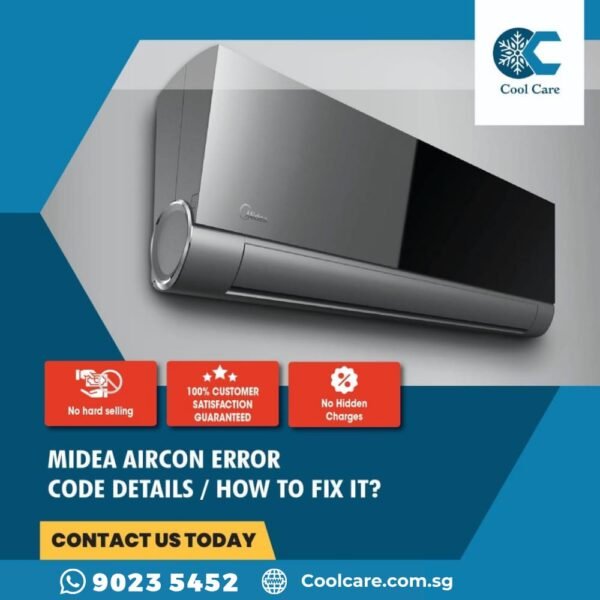
First, let’s break down what the “Ue” error code signifies. Midea air conditioners, like many modern appliances, use error codes to communicate specific problems. Think of it like your car’s dashboard lights—they flick on to indicate something’s not working quite right. The “Ue” code usually relates to a problem with the unit’s power supply or voltage issues. Essentially, it’s your AC’s way of saying it’s having trouble getting the right amount of power to do its job. Understanding this is crucial because it helps you determine whether the issue is minor or requires more serious attention.
Understanding the Midea “Ue” Error Code
So, what exactly does the “Ue” error code stand for in the world of Midea air conditioners? Basically, this code hints at a power-related issue, which could stem from a variety of causes. It’s like when your phone battery suddenly drains faster than usual—several factors such as background apps or settings could be the culprits. Similarly, with the “Ue” error, it could be anything from an unstable power supply to wiring issues.
One common cause of the “Ue” error is voltage fluctuation. The AC unit might not be receiving the stable flow of electricity it needs to function properly. Imagine you’re trying to fill a bucket with water, but the tap keeps shutting off unpredictably. That’s what your air conditioner faces with erratic voltage. Another possible cause could be loose or damaged wiring, affecting the flow of electricity to your AC unit. Just like kinked water hoses can stop the flow of water, bad wires can prevent electricity from properly reaching the unit.
Lastly, a faulty control board could be to blame. The control board is like the brain of your air conditioner, directing various functions. If something’s wrong with it, your AC might start acting like it forgot how to do its job. If you’re seeing this error frequently, it might be a sign of deeper electrical issues within your home that need addressing.
Is Error Code “Ue” Covered Under Warranty?
Now, here’s the big question: is this “Ue” error going to cost you, or is it covered by your Midea warranty? Typically, whether a problem is covered or not can depend on a few factors, much like how a car warranty might cover some repairs but not others. The warranty coverage for air conditioners generally includes defects in materials or workmanship. That means if the error is due to a fault in manufacturing, there’s a good chance your warranty has you covered.
However, not all issues fall neatly under warranty. For instance, if the “Ue” code arises because of electrical issues outside the AC unit—say, wiring in your home or fluctuating power supply—those wouldn’t typically be covered. It’s like if your toaster stops working because of a power outage, the toaster isn’t the problem.
You’ll want to check the specifics of your warranty policy. Many times, these documents are filled with legal jargon that can be confusing, but the key parts to look for are the warranty period and what it explicitly covers. If you’re unsure, contacting Midea’s customer service directly can provide clarity—they’re usually pretty helpful.
What to Do Next?
If you’re faced with a “Ue” error on your Midea air conditioner, here’s the deal: don’t panic! First, try resetting your unit. Sometimes, a simple power cycle, like turning it off and on, can make the error disappear. It’s similar to how your computer sometimes needs a reboot to fix glitches. If that doesn’t work, check your home’s electrical supply to ensure it’s stable and reliable.
Should the problem persist, it might be time to get in touch with a professional technician. They can diagnose whether the problem is internal—like a defective part—or external, such as faulty wiring. If your unit is still under warranty, and the issue is a result of a covered fault, reaching out to Midea or your retailer might be your best bet for a hassle-free fix.
Preventative Measures
Finally, to keep your air conditioner running smoothly and avoid future “Ue” errors, consider these tips: ensure your home has stable electricity and consider using a surge protector. Regular maintenance checks can also identify potential issues before they turn into full-blown problems. Think of it like regular doctor check-ups—it’s always better to catch issues early!
Keeping your warranty documents handy and familiarizing yourself with their terms is also wise; it prepares you for any future hiccups. In the world of air conditioners and warranties, an informed homeowner is a savvy homeowner.